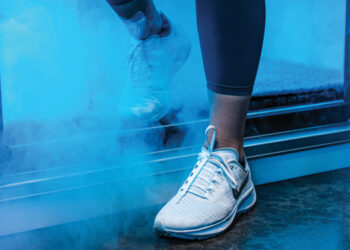Whether you refer to it as CrossFit, functional fitness, or just small-group personal training, functional training has grown in popularity in clubs over the last couple of years. Fitness facilities are now faced with carving out existing space to dedicate to this kind of training, as it grows in demand. If you find that you too are looking for a space to host these new, functional workouts, one of the things that you’ve likely realized is that you’re going to have to look for different types of flooring for this new area. So what do you choose, and what’s available?
When we talk to club managers about traditional flooring, our first question is, “What do you plan to do in this area?” Functional fitness can encompass a myriad of activities, and what type of flooring you put down depends on what type of activities you’re planning to do in that area. However, the activities in functional fitness are so diverse, that you may find that putting down just one type of flooring in that area may not be adequate. Sometimes, you’ll find that you’ll want two, and maybe even three types of surfaces there.
Clearly, rubber flooring is going to be part of the equation. You may be carving the CrossFit area, for example, out of part of your existing weight or cardio area. If so, you likely already have some type of rubber down. In most cases, this rubber is either 5/16-inches or 3/8-inches thick. If you’re utilizing a lot of heavy, free-weights or using Kettlebells in this area, you may be in trouble! Rubber in these areas should be upgraded to any of the 1-inch or greater rubber tiles. Otherwise, you’ll find that over a relatively short period of time, dropped weights will be cutting through your existing floor. This is especially true if you are using metal Kettlebells or hex-head weights. It’s not necessary that you do it throughout the entire area, but at least under those areas where you will be directing clients to participate in these activities.
Another surface that is particularly popular for functional fitness areas is artificial turf. This is especially useful for speed and agility training, as it is easier to run on than rubber. Unlike rubber, turf is an area in which you’ve likely had no experience with, and therefore have less certainty about what you need.
First, let me tell you that you will not be purchasing the type of turf used in the NFL.
What you’re looking for is an artificial turf with a short nap that is bonded to either foam or rubber. Typically, 3 or 4-inch-wide roll will work, for whatever length you need. Recently, one company introduced interlocking turf that is bonded to a rubber base, and it looks interesting — especially if you want to use the area only temporarily.
Another surface option for your functional fitness area is a dense foam floor that was designed for functional training. It can be customized with illustrations to show where participants are to place their hands, feet, or equipment on the floor. Additionally, illustrations can show members where to perform various exercises, or it can create individual stations.
You can choose from a wide selection of graphics, or you can create your own. Either way, illustrations help your small group trainer show members what to do, and where.
As previously mentioned, it’s best to be clear about exactly what you want to do in your functional training area. Then, find a space to allocate for it. Pick the surfacing that best fits your needs in both function and size, and be prepared for your members to train to the best of their ability.
Steve Chase is the General Manager of Fitness Flooring. He can contacted at 800-428-5306 or by email at Steve@fitnessfloors.com.
Stay ahead in the fitness industry with exclusive updates!
Rachel Zabonick-Chonko is the editor-in-chief of Club Solutions Magazine. She can be reached at rachel@peakemedia.com.











